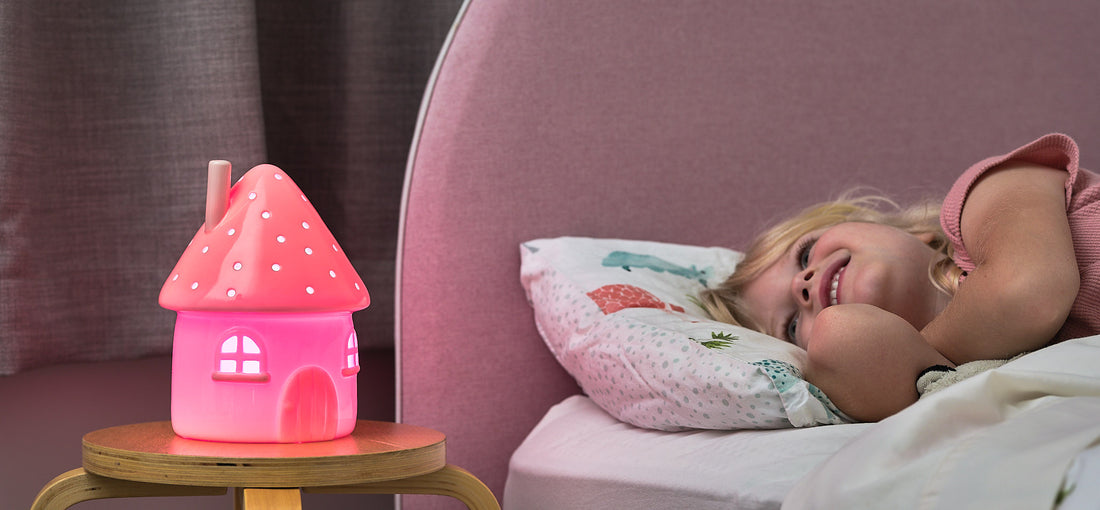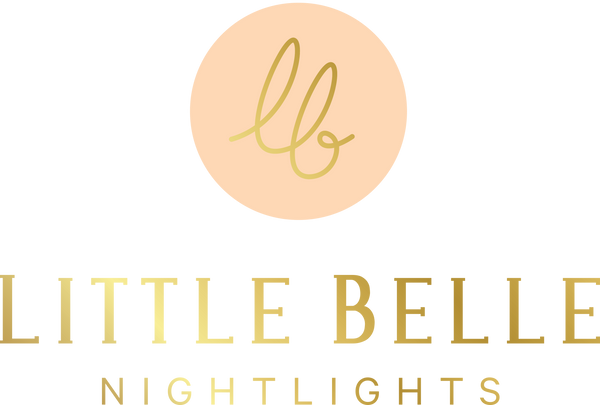
How a red light will help your child to sleep better
Share
One of Little Belle Nightlights key sleep-inducing features is the red light setting. While there are endless benefits to having a regular night light in your child's room, a Red Light nightlight is functional and effective at helping your child sleep throughout the night.
You can be assured that sending your baby to sleep with the red light setting of a little belle elfin light or unicorn nightlight will not interfere with your babies sleep. Using a red based light has a much higher wavelength than white/blue/green light, which research shows does not inhibit melatonin. The red light is also much loved by parents with middle of the night nappy changes and feeds.
So, what is so great about Red Light and why should I be using it to help my child sleep?
Does not prevent melatonin production:
Melatonin is a hormone that your brain produces in response to darkness. It helps with the timing of your circadian rhythms (24-hour internal clock) and with sleep. Being exposed to light at night can block melatonin production.
Research suggests that melatonin plays other important roles in the body beyond sleep. However, these effects are not fully understood.
To make the most of this naturally occurring hormone, you want to work with it, not against it. This is where having a red nightlight can be important - especially in the first year.
Contrary to what you may have seen elsewhere, a red light does not produce melatonin, it just doesn’t inhibit the production of it.
Helps with fears of the dark:
Children may start to feel afraid of the dark as early as 18 months, which is why so many parents have incorporated nightlights into their children’s bedrooms. The problem is that some night lights actually keep your child awake and interfere with natural melatonin production. Using a red light night light not only helps your child stay asleep, but it also eliminates the chance for your child to wake up and become fearful of the dark. If you find your child waking up, especially from night terrors or with a fear of the dark, the red light may be beneficial to your child.
Regulates circadian rhythm
Our circadian rhythm is what controls our bodies and the way we naturally sleep and wake up. This rhythm guides the way we naturally feel tired, and it can sometimes be affected by seasonal time changes and jet lag. Our circadian rhythm exists from birth but doesn't fully develop until we are 12 months old. Red light can assist our bodies in establishing a strong circadian rhythm, especially when it is out of sync - because of the way it helps us produce melatonin.
Combats the adverse effects of blue light:
We all know that blue light is bad for us. Some people even turn to blue light blocking glasses to keep the effects of blue light to a minimum. Blue, white or green light, no matter at what brightness, can detriment our sleep cycle because they are stimulants that signal the body to be awake. Countless studies have shown that these color lights boost attention and reaction times, which interrupt the production of melatonin by tricking the brain into believing it is still daylight. Our children are exposed to plenty of blue light throughout the day and evening, so having something to combat this blue light exposure is key to helping them sleep. Red light is at a higher wavelength, and since it helps our bodies produce melatonin, it can reverse the negative effects of blue light.
Mimics the sunset:
The Red Light can mimic the red light frequency of the sunset. The reason for this is because the sunset is what signals our bodies that it's time to sleep as it eliminates the light from the world around us, and our bodies begin to produce melatonin.
